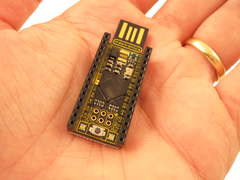A fellow Arduino enthusiast has devised a very simple and novel way of changing the playlist in Windows Media player using an Arduino board, RFID reader and some custom Windows software. The system is programmed so that each RFID tag is associated with a certain playlist - so instead of navigating around Windows the tunes can be changed with the wave of a tag. This would also be great for parties, or simplifying the use of home-theatre PCs. Here is a brief explanation and demonstration:
Always great to see something that should be simple actually simplified. To get started with your own version, consider using the Freetronics Eleven - the Arduino Uno-compatible with onboard prototyping area:

For more information, PC an Arduino code visit the project site here.






















